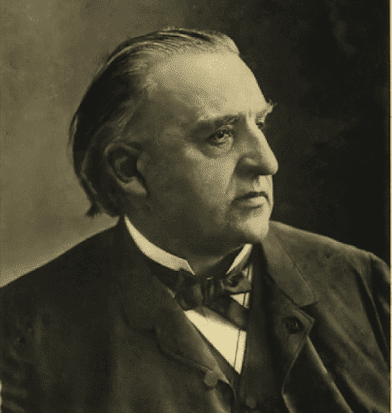Jean-Martin Charcot (29 November 1825 – 16 August 1893) was the son of a carriage-maker. He was the son and grandson of Parisian carriage makers. Charcot was a gifted painter who used his artistic abilities and strong visual memory to make associations about patterns of disease in the field of medicine and anatomy.
His father, due to financial limitations, decided that the son who performed best at school would go on to higher education.
Charcot naturally beat his three siblings and completed his undergraduate medical training at the University of Paris in 1848.
Charcot became a hospital intern in 1848 and was appointed chef de clinique in 1853 after defending his thesis on gout and chronic rheumatism.
He married a wealthy widow in 1862 and had two children, Jeanne and Jean Baptiste. Jeanne became a doctor and his son Jean-Baptise went on to follow, reluctantly in his father’s footsteps as a physician but is more famously remembered as being a maritime explorer.
Charcot became Professeur agrégé (1860), and in 1862, he was appointed senior physician at the Salpêtrière. His research was established on the anatomoclinical method. This knowledge facilitated his studies on localizing functions in the brain and spinal cord by means of clinical correlations of post-mortem findings. He was a man with method and the ability to make observations.
He was Professor of Pathological Anatomy at the University of Paris in 1872 and Professor of Neurology in 1882. As professor of pathological anatomy, he lectured on diseases of all organs while providing cadavers and specimens for students. Some of his students that would go on to become well-known physicians include Sigmund Freud, Charles Babinski, and Gilles de la Tourette.
Charcot is credited to have given an accurate depiction of several important diseases, such as multiple sclerosis, amyotrophic lateral sclerosis and Parkinson’s disease.
Charcot made the first correlations between the clinical features of multiple sclerosis and the pathological changes found post-mortem. He was the first physician to diagnose multiple sclerosis in a living patient, using the triad of nystagmus, intention tremor and scanning speech to separate it from similar diseases. Charcot called the disease la sclérose en plaques for the first time in 1868.
He also named paralysis agitans (shaking palsy) after James Parkinson (Parkinson’s disease) (1872), and distinguished bradykinesia from rigidity as a unique cardinal feature of the illness.
He also described several cases of isolated progressive motor symptoms, with fasciculation, rigidity, contractures, bulbar involvement and death from respiratory failure. Charcot called this disease primary amyotrophic lateral sclerosis (ALS) and correctly identified the dysfunction of anterior horn cells as the pathology underlying the clinical features.
Jean-Martin Charcot - The Napoleon of the neuroses
Mountain Dew: A History of Innovation and Success
-
Mountain Dew, a popular citrus-flavored soft drink, has a fascinating
history that dates back to the 1940s. The beverage was originally created
by Barney a...




